
If you have the courage, the new Range Rover will take you almost to any place on earth. But would you, knowing the price?
THE BRITONS REFER TO THE Range Rover as the ‘world’s best car’, with a plush interior on a par with the Bentley’s, a supple ride matching the Rolls-Royce’s, the performance of a Porsche and off-roading abilities of… er… a Land Rover.
Is it another case of national pride that always brings James Bond back to life despite innumerable attempts by his malicious enemies brandishing lethal guns?

Unlike the spy with a ‘licence to kill’, most things said about the Rangie are true, which I discovered when I drove it first in Morocco last year. But once it is imported to India as a completely built-up unit (CBU), the ratios change, you can send your gratitude to the Indian import laws, for it becomes more than twice as expensive in our country after paying the Customs duty.
You need to pay over Rs 2 crore (Rs 1.75 crore, ex-showroom Pune) for the dieselpowered 4.4-litre SD-V8 top-of-the-line Autobiography model, which we tested. So, does it make sense in India? We explore.

WHAT’S SO SPECIAL ABOUT THIS SUV?
If you mean a sport utility vehicle (SUV), then there is nothing utilitarian about the Range Rover. There’s richness and superior quality everywhere you look. And then it takes you in the lap of luxury from point A to B and even rock-crawls to D if you want to bypass point C, like no other. Why I say that is because it brilliantly blends the dual character a luxury car and extreme off-roader in one car with Star Trek-ish engineering. In fact, the company describes it as the world’s First aluminium SUV, yelping it save over 300 kg of mass. But aluminium is a lot more
expensive than steel, which, in turn, makes the Range Rover a lot more expensive than its competitors.

SO, HAS IT LOST THE OLD-SCHOOL CHARM?
Not really, as the company still complies with the clear engineering and design principles and remains true to the Range Rover design, which has been consistently followed since the first one back in the 1970s. The silhouette remains unmistakable, with the clamshell bonnet, floating roof and clear boxy shapes. But to be socially more acceptable the Range Rover is not as upright as the earlier models and is mighty slippery to help it glide through air. It’s also wider, longer and lower in standard driving height than the older Range Rover, but it’s hard to notice
any of it due to the smart design. The important thing here is that it doesn’t compromise on off-roading ability for styling, like some other SUVs that attempt to be utterly sporty.

WHERE’S THE LUXURY CAR BIT?
If you’ve been in the old Range Rover, then the interior of the new one will stun you with its opulence and limousine-like quality and construction. The cabin is simple yet classy, very luxurious and roomy. It’s laced with exquisite material, finest leather and wood, finished with unparalleled workmanship. You’ll notice the effort and care put in to tantalise you in everything
you touch, smell and see.
 The engineers have shelved half the switches and controls to make the cabin look neater and now most of the function can be operated through the intuitive touchscreen. Although most dials and chrome accents look like metal, they are actually of a high-quality plastic, in a bid to save weight. I find the delicate rotary gear selector on this cross-country SUV to be a bit out of place and preferred it better on my dilapidated Sonodyne hi-fi. There the usual throne-like driver’s seat, which offers imperious driving position, as expected from the Range Rover.
The engineers have shelved half the switches and controls to make the cabin look neater and now most of the function can be operated through the intuitive touchscreen. Although most dials and chrome accents look like metal, they are actually of a high-quality plastic, in a bid to save weight. I find the delicate rotary gear selector on this cross-country SUV to be a bit out of place and preferred it better on my dilapidated Sonodyne hi-fi. There the usual throne-like driver’s seat, which offers imperious driving position, as expected from the Range Rover.

The thin rim of the four-spoke steering wheel of our test vehicle came wrapped in high grade leather and wood. I hardly let go of the wheel, as the cool audio and cruise control buttons are held beautifully on it, well within my thumbs’ reach. There’s nothing really to complain besides the steering-mounted gear shift paddles, which felt flimsy and out of place in this upmarket
neighbourhood.

IF IT’S CHAUFFEUR-DRIVEN, WHAT DOES THE CAR-OWNER GET?
Unfortunately in our country, even after paying an astronomical amount of money for the Range Rover, most of the time owners will pay another man to drive them around and J-LR are well aware of that. That’s why they’ve paid immense attention to making the back seats as comfortable as Hizamakura’s lap pillow. There are these large lounge-like rear seats which will
satisfy the chauffeur-driven Asian. I decided to sample it myself after driving the Rangie continuously from dawn to dusk for our photo shoot. I got a pair of airconditioning vents all for myself, a private entertainment system with an eight-inch display and a really cool touchscreen remote, though its interface could have been better. Even with the diesel motor running, the cabin feels unbelievably quiet and isolated. Pretty soon I snuggled into the sofa-like seats with generous rear legroom and almost dozed off. This SUV can effortlessly play the role of a
chauffeured limo, if you want it to.

LET’S TALK PERFORMANCE, SHALL WE?
Under the clamshell is a refined and retuned 4,367cc oil-burner which was also used in the older version, but is more productive. On tap there’s 339 PS of maximum power at 3,500 revolutions per minute and a gigantic 700 Nm of peak torque available right from 1,750-3,000 revs. The silky engine works an eight-speed ZF gearbox, which is so swift that you won’t
notice when the gears change. Be gentle on the throttle and the tranny focuses on being efficient, stretching a litre of diesel to 8 km in the city and 12 km on the highway, impressive for its size and abilities.

Despite the bulk it has strong performance to offer. Step on the gas and the Range Rover blasts off on the straight. This is where the power-to-weight ratio plays a vital role, rapidly narrowing the overtaking distance. I wish the exhaust note were a bit more audible, as only a soft growl of the V8 filters through the ultraquiet cabin. In just 7.29 seconds it can
propel from 0 to 100 km/h. Even the quarter mile is achieved in luxury saloonmatching 15.09 seconds, flying at 139.15 km/h. A large SUV with so much force needs equally strong stopping power, which is provided by large 380-mm ventilated discs up front and 365-mm ventilated discs at the rear. Our test runs brought the Range Rover from 100 km/h to standstill in just 3.28 seconds, over 44.31 meters, while the electronics made sure that the towering SUV remained steady.

HOW STEADY?
The engine response is matched by it delightfully crisp handling. At 2.7 tonnes this isn’t really a light vehicle, but the benefits of having an aluminium monocoque chassis which is substantially lighter and stiffer is evident in this department. The Range Rover handles with immediacy, contradicting its proportions. The steering and wheel communication is clear and
precise, which is extremely important at high speed and while off-roading.
The ride is incredibly super-saloon like, supple and docile on-road and on top of that it can also diffuse the harshest of impacts while off-roading. The front air springs absorb road irregularities, while the stiffer frame soaks up severe shocks without creaks or twists. The Dynamic Response and adaptive damping do a good job of reducing body-roll, but can’t really erase it altogether due to its immense size and imposing height, especially during sudden direction changes.

Anything Else That We Should Know? I must mention Range Rover’s stunning off-roading skills. The lightweight adaptive suspension gives excellent wheel articulation, while the five-mode Terrain Response system now has an automatic mode, which monitors road conditions and sets the car up appropriately if the driver isn’t sure which mode to select manually. We made it crawl over some unimaginable terrain and not once did it back down, though we did run out of nerves keeping the price-tag in mind. The high driving position helps, so does its excellent
approach and departure angle and ground clearance, which can be increased further by 50 mm to avoid embarrassing situations, such as bellying out. With 3,500 kg towing capacity and a wading depth of up to 900 mm, it can take you anywhere you desire and get you out of almost any situation. No, it can’t lie to your wife.

OKAY, IS IT WORTH THE MONEY THEN?
Well, there’s no denying that the new Range Rover mixes the best of both the worlds – enthusiast-pleasing mud-plugging ability and luxury saloon-like plush ride and interior. To be honest, the entire experience feels weird. I mean, being surrounded by lightweight panels, deluxe interior, lounge-like ambience lighting and the works, while crossing a turbulent river
– absolutely surreal experience. At the price, I feel the Range Rover is not meant for everyone and is for the exclusive club of tycoons, royalties and superstars. But
definitely a significant car for us. As we can proudly proclaim that the world’s most luxurious SUV is a product of an Indianowned
company!
WE MADE IT CRAWL OVER SOME UNIMAGINABLE TERRAIN AND NOT ONCE DID IT BACK DOWN, THOUGH WE DID RUN OUT OF NERVES KEEPING THE PRICE-TAG IN MIND

GADGETS
They might not seem significant but the absence of features like keyless entry, soft door close and power for both sections of the split tailgate meant the outgoing car showed its age by comparison with newer luxury rivals. That’s been fixed here..

OFF-ROAD AIDS
Terrain Response 2 optimises the engine, gearbox, centre diff and traction-control settings to suit five different types of terrain. A locking rear differential is an option on the diesel V8 and Supercharged. The low-range transfer case can be shifted at speeds of up to 60kmph.

ALUMINIUM STRUCTURE
The new aluminium monocoque is bonded and riveted and draws on Jaguar’s decade of experience building such structures. JLR has invested nearly £1bn in the new platform, to be used
next on the Range Rover Sport. Here it cuts 180kg or 39% from the old car’s body-in-white weight.

DOWNSIZING
More pace, or the same speed from a downsized engine? The new Range Rover is still no Mo Farah at over 2.3 tonnes for the V8s, but the new V6 diesel only has 2160kg to shift and gives the same pace as the old V8 diesel but with emissions cut by 22%.

AERODYNAMICS
Hailing this as ‘the most aerodynamic Range Rover ever’ isn’t much of a boast when the old car had about as much windtunnel time as Stephenson’s Rocket. But it has active aero, with vanes in the grille which close when airflow isn’t needed.

BRAKES
The brakes were one of the few weak areas of the old model at launch, and this one should have no such problems with less mass to restrain and six-piston, 380mm Brembos at the front and 365mm at the rear. Intelligent Emergency Braking makes its debut.

SUSPENSION
The suspension is entirely new and now largely aluminium too, helping to cut mass further. The double wishbones at the front give 260mm of travel and the multi-link rear 310mm. As before, cross-linked air springs help keep the wheels on terra firma for longer when crossaxled by forcing the unladen wheel down.
Story: Sarmad Kadiri
Photography: Sanjay Raikar







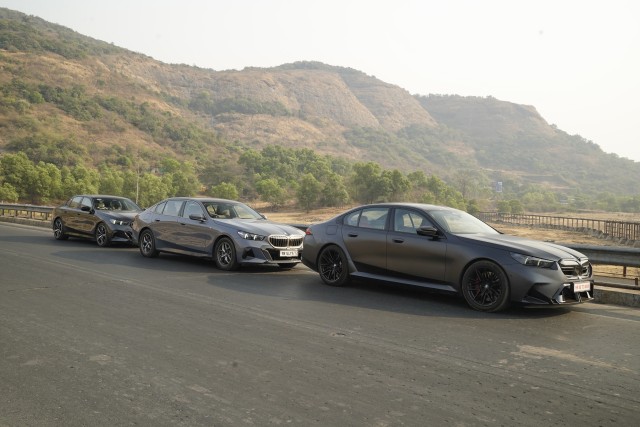
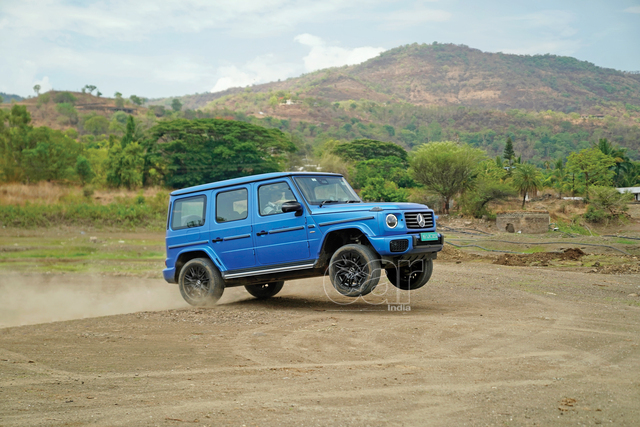
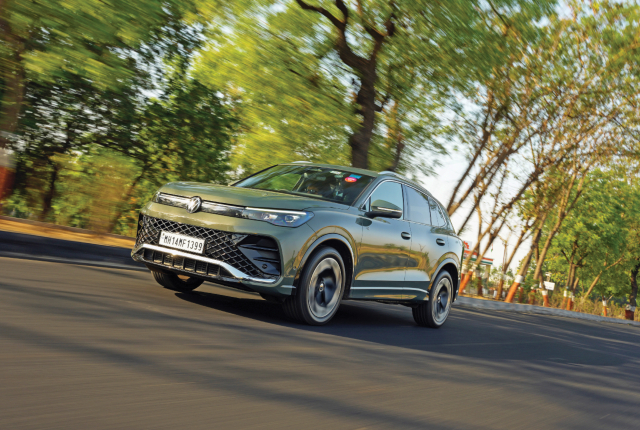
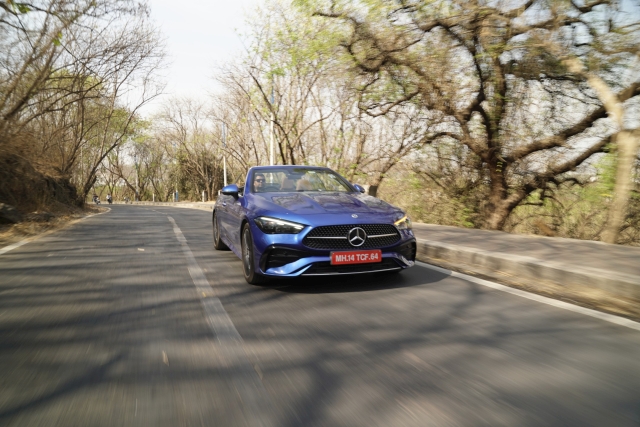

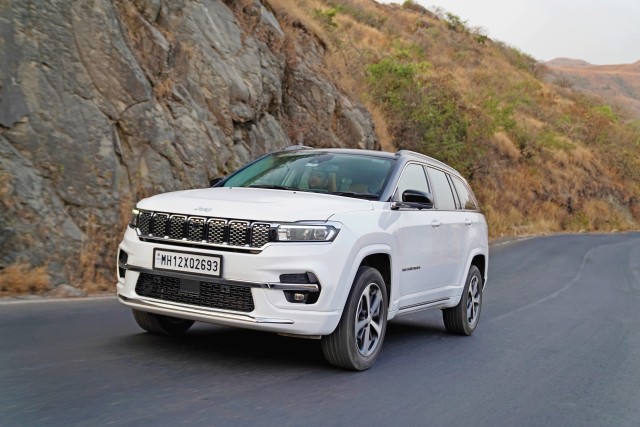
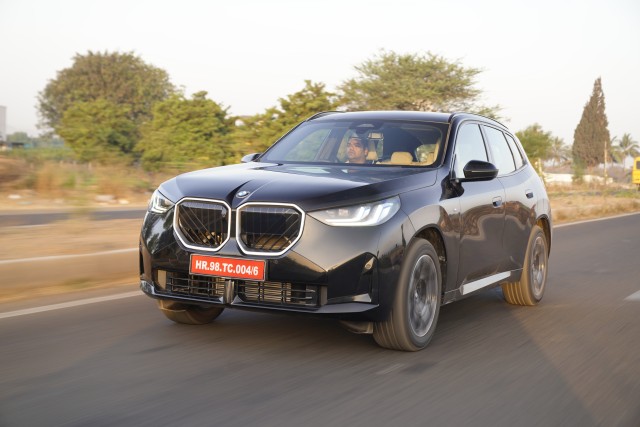
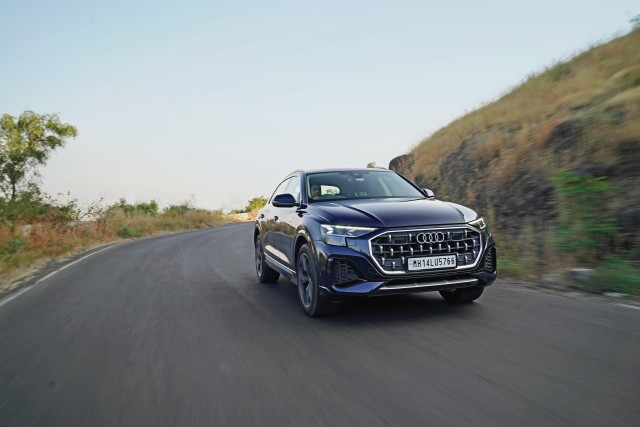
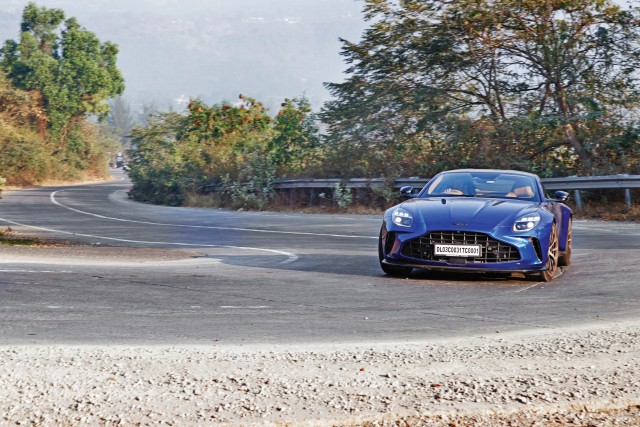
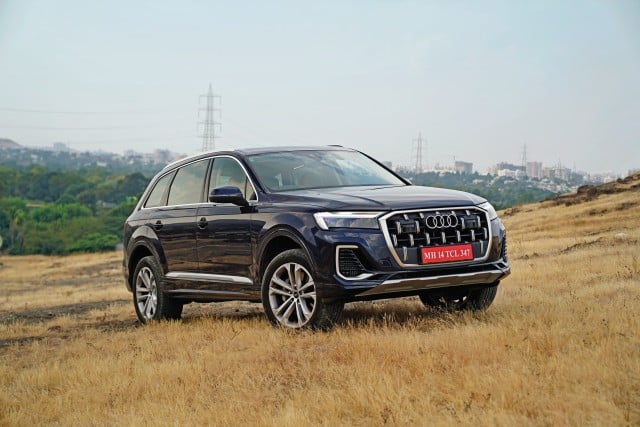
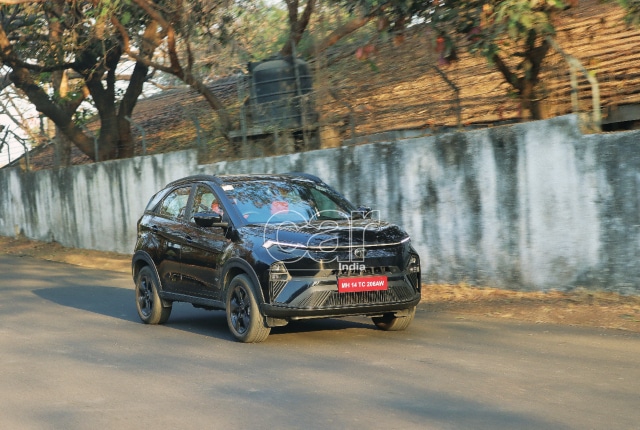



Leave a Reply